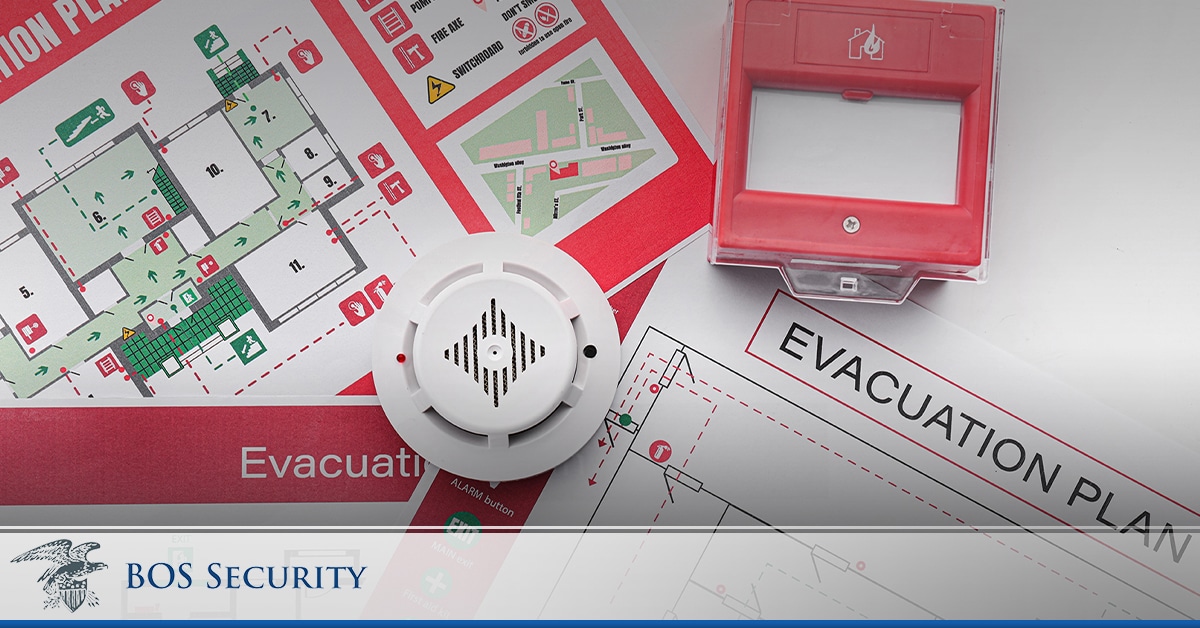Depending on the nature of your business, you probably have an emergency evacuation plan for fire, natural disasters, and other emergencies. You may even have a plan for hazardous materials. But do you have an active shooter plan? It’s become an unfortunate reality that it’s a possibility employers must prepare for.
According to the Department of Homeland Security, an active shooter event is typically over in 10-15 minutes. It’s important to respond quickly. A clear plan and practice are essential. Hesitation can lead to loss of life.
Here’s How To Develop And Implement An Evacuation Plan
Create an Emergency Action Plan (EAP) with HR, the safety committee if you have one, building owners or property managers, security staff, and local law enforcement/emergency response.
Any EAP should include:
-
- Emergency roles and responsibilities.
- Notification, warning, and communications procedures.
- Evacuation, shelter, and accountability procedures.
- Location and use of standard emergency equipment.
- Emergency shutdown procedures.
- Emergency escape plan (i.e., floor plans, safe areas)
- Information about closest available medical care (hospitals, etc.)
- Emergency contact information (management point-person, police, fire, ambulance, hospital)
Training Your Team to Prepare For Active Shooter Situations
Practice is essential in the ability to react quickly if the time comes. There are three components to active shooter response: flee, hide, engage. Work with local law enforcement for their recommendation in designing and practicing training exercises.
Active Shooter Basics:
-
- Be aware of your environment and any possible dangers.
- Make a note of the closest two exits to your location.
- Know what plans are in place for active shooter response.
Fleeing the Threat:
-
- Ensure that your facility has at least two evacuation routes.
- Post evacuation routes in conspicuous locations throughout your facility
- Provide for people who may need assistance.
Hiding Until Danger Passes:
Choose a hiding place that conceals you from the shooter’s view and protects against any shots fired in your direction. If you are in an office with a door or can get to one, stay there and lock the door. If you are in a hallway, get into a room and secure the door.
-
- Barricade the door with heavy furniture.
- Hide behind large items such as file cabinets.
- Silence all mobile phones or devices.
- Remain quiet until the threat has passed.
- Keep an eye out for improvised weapons if you need them.
Engaging the Assailant
If you are faced with a life-or-death encounter and must confront the assailant as a last resort, move swiftly and decisively.
-
- Behave aggressively toward the attacker.
- Disrupt them and try to incapacitate them.
- Yell, throw heavy items, and use any weapons.
Consult With Security Guards
If you are working with a reputable security firm, their guards are likely to be well-trained in any potential danger. That includes an active shooter event. Live remote security monitoring can be indispensable as well. Remote guards can often detect suspicious behavior even before the assailant escalates. They can also keep law enforcement abreast of the location of security or anyone who is hiding in the building who needs to be evacuated.
Contact BOS Security
If you’re looking for solutions to address active shooter events or help developing an evacuation plan to prepare for threats of any kind, call 404-793-6965 or, contact the experts at BOS Security today.

